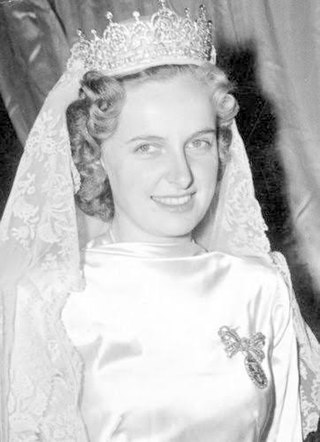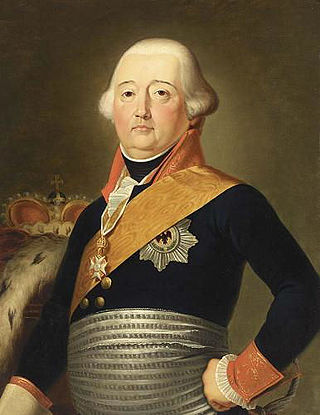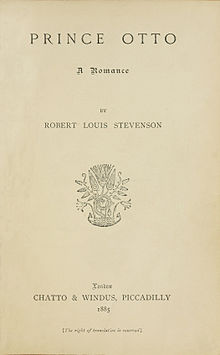Plot
Prince Otto evades his escort near the borders of Grünewald (a tiny country within present-day Germany) while out hunting and enters the neighboring country of Gerolstein. There, he takes shelter for the night under an assumed disguise with Killian Gottesheim, his daughter Ottilia, and her suitor Fritz. While discussing the state of affairs, the revolutionary Fritz expresses dissatisfaction with Otto's rule as does Killian, though with more respect and restraint on the latter's part. It is revealed that Baron Gondremark has both wooed the Princess Seraphina and begun preparations for a revolt in hopes of expanding Grünewald's borders. The next morning, Ottilia defends the Prince as an honorable man and after further discussion, while still concealing his true identity, he offers to purchase Killian's farm to ensure his family's management and they agree to meet in Mittwalden, the capital of Grünewald, in two days.
Once Otto returns to his castle, he confers with his cousin Doctor Gotthold about his faults of character. They are interrupted by Chancellor Greisengesang, who bears a letter written by a Sir John Crabtree, an English visitor to the court, detailing Seraphina's indiscretions with Gondremark as well as his own affair with Countess Anna von Rosen, as well as his plans for the country. Deciding to confront Seraphina, Otto meets with Countess von Rosen in the princess's antechamber while she and Baron Gondremark agree to go forward as planned in their political scheme, but have not yet become involved physically. Otto, upon meeting her, commands Seraphina to limit her interactions with Gondremark as they smack of an affair, which she vehemently refuses to obey, stung by his accusation.
The Princess summons a council early, spurred on by Gondremark, with the intention of declaring war on Gerolstein, but Gotthold refuses to make his own voice heard with the prince absent; Prince Otto arrives unexpectedly at this moment and adamantly refuses to go to a war unprovoked and dishonourably, despite Baron Gondremark's explanations that it would be advantageous. Seraphina angrily rebukes him for never having bothered with being a ruler before and interfering in a plan to bolster the wealth and confidence of Grünewald. Prince Otto, having been refused the funds to purchase Killian's farm, offers to find an alternate solution or to abdicate his throne, but not before rescinding Seraphina's authority to sign orders and documents. Gondremark then suggests a plot to lure the Prince away on a hunting venture while they orchestrate the execution of the revolt.
Otto seeks Countess von Rosen's aid in stealing the necessary funds from the treasury, which she agrees to, but privately he rebukes himself for his own dishonesty. However, the Countess offers him the funds out of her own wealth, and they share a tender moment before he completes the transaction. Having narrowly avoided a lapse in honor, Otto plans to share his good deed with Gotthold. The doctor, however, sternly rebukes Otto for having seemingly stolen treasury funds, publicly humiliating Seraphina, and for being seen in an intimate manner with the Countess. Otto refuses to disclose how he came by the funds or that his interaction with the Countess was innocent, but is deeply wounded by Gotthold's opinion of him and forgives him sadly. The Countess meets with Gondremark and intercepts the order for Otto's hunting excursion under the pretence of arranging matters but privately delivers it to the Prince; recognizing the apparent futility of action, Otto quietly acquiesces to the terms of the arrangement. The Countess then visits Princess Seraphina and reveals her affair with Gondremark, rebuking her for her ill treatment of Otto; Seraphina signs the release for Otto and holds an audience with the Baron, where she stabs him in a fit of rage when he parades his affair before her, realizing at last his untrustworthiness. After summoning Chancellor Greisengesang to conduct the wounded Baron away for treatment, she flees by night.
Unbeknownst to Seraphina, once the populace is made aware of Gondremark's injuries, a republic is declared in Grünewald. Seraphina flees through the woods intent on reconciling with Otto. Along the way, she encounters Sir John who, acting on his recent friendship with Otto despite his distaste for the Princess, conducts her most of the way by carriage to the Felsenburg, where Otto is imprisoned. Meanwhile, Otto discovers that Doctor Gotthold has also been imprisoned, and upon encouragement from Colonel Gordon, the arresting officer, both forgive each other. Unaware of the revolution, Countess von Rosen arrives with his release order and they depart together until they encounter Sir John, who informs them of Gondremark's wounds, prompting the Countess to ride away, presumably toward the capital. Otto races toward Seraphina and they both agree to put their past lives behind them, living together with a newfound love for one another. A bibliographical postscript relates that they live together in her father's court, while Grünewald is eventually absorbed into the larger state of Germany.

Archduchess Gisela Louise Marie of Austria Princess of Hungary, Princess of Bohemia, Princess of Galicia and Lodomeria, Princess of Croatia, Slavonia and Dalmatia was the second daughter and eldest surviving child of Emperor Franz Joseph I and Empress Elisabeth of Austria. She became a Princess of Bavaria through her marriage to her second cousin, Leopold.

Princess Sophie of Hohenberg was the only daughter of Archduke Franz Ferdinand of Austria and his wife Sophie, Duchess of Hohenberg, both of whom were assassinated in Sarajevo on 28 June 1914. This assassination triggered the First World War, thus Sophie and her two brothers are sometimes described as the first orphans of the First World War.

Duchess Cecilie Auguste Marie of Mecklenburg-Schwerin was the last German Crown Princess and Crown Princess of Prussia as the wife of Wilhelm, German Crown Prince, the son of Wilhelm II, German Emperor.

The Mayerling incident is the series of events surrounding the apparent murder–suicide pact of Rudolf, Crown Prince of Austria, and his lover, baroness Mary Vetsera. They were found dead on 30 January 1889 in an imperial hunting lodge in Mayerling. Rudolf, who was married to Princess Stéphanie of Belgium, was the only son of Emperor Franz Joseph and Empress Elisabeth, and was heir apparent to the throne of Austria-Hungary.

La Grande-Duchesse de Gérolstein is an opéra bouffe, in three acts and four tableaux by Jacques Offenbach to an original French libretto by Henri Meilhac and Ludovic Halévy. The story is a satirical critique of unthinking militarism and concerns a spoiled and tyrannical young Grand Duchess who learns that she cannot always get her way.

The House of Bismarck is a German noble family that rose to prominence in the 19th century, largely through the achievements of the statesman Otto von Bismarck. He was granted a hereditary comital title in 1865, the hereditary title of Prince of Bismarck in 1871, and the non-hereditary title of Duke of Lauenburg in 1890. Several of Otto von Bismarck's descendants, notably his elder son Herbert, Prince of Bismarck, have also been politicians.

Johanna Friederike Charlotte Dorothea Eleonore, Princess of Bismarck, Duchess of Lauenburg was a Prussian noblewoman and the wife of the 1st Chancellor of Germany, Otto von Bismarck.

Anna Sophia "Sophie" Hagman, néeAnna Kristina "Stina" Hagman, was a Swedish ballet dancer. She was the official royal mistress to Prince Frederick Adolf of Sweden from 1778 to 1793.

Regina von Habsburg, also known by the traditional royal title of Archduchess Regina of Austria, was a German-born Austrian social worker. She was a member of the House of Wettin by birth and married to Otto von Habsburg, the last heir of the Austro-Hungarian Empire.

Hermann Friedrich Otto was the ruling Prince of Hohenzollern-Hechingen from 1798 until 1810.

Countess Caroline von Holnstein, Baroness von Künsberg was a German noblewoman, best known for her appearance in the Gallery of Beauties.

Charlotta Aurora De Geer later Gyldenstolpe and Wetterstedt (1779–1834), was a politically influential Swedish countess, salonist and courtier.

Princess Elisabeth Marie of Bavaria was a member of the Bavarian Royal House of Wittelsbach.

Aurora Wilhelmina Brahe née Koskull was a Swedish lady-in-waiting and politically active salonist.

Archduke Maximilian of Austria was a member of the House of Habsburg-Lorraine and the younger brother of the Emperor Charles I of Austria.

Princess Tatiana von Metternich-Winneburg was a Russian aristocrat, philanthropist, artist, and patron of the arts. She published her books and watercolours under the name Tatiana von Metternich. She supported charity, especially the Red Cross and the Order of St. Lazarus, which she served as Grand Bailiff for Germany. She was a founding member of the Rheingau Musik Festival, made parts of Schloss Johannisberg available as concert venues for the festival and served as the president of its Kuratorium until her death.
Princess Marie-Clementine Bagration was the illegitimate daughter of Prince Klemens von Metternich and Princess Catherine Bagration.

Princess Gertrude of Hanau and Hořowitz, was a German aristocrat. She was the morganatic spouse of Frederick William, Elector of Hesse.

Otto Heinrich von Gemmingen zu Hornberg was a member of the aristocratic Gemmingen family. He was a diplomat and enlightenment writer, a Freemason and a friend of the composer Wolfgang Amadeus Mozart.

The wedding of Albert Edward, Prince of Wales, and Princess Alexandra of Denmark took place on 10 March 1863 at St. George's Chapel, Windsor Castle. It was the first royal wedding to take place at St. George's, and the last wedding of a Prince of Wales until Prince Charles and Lady Diana Spencer's 1981 wedding.



















